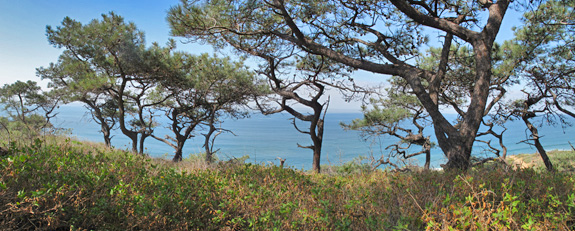Original Publication DATE: 6/10/2012
Lewisia kelloggii in the Siskiyous
In the southern Siskiyou Mountains, around the headwaters of Bluff Creek, a discovery was made a few years ago that I was intrigued to see for myself. Kirk Terrill, a Forest Service Botanist, found an unusual flower on an isolated ridgeline of serpentine. In 2010 these plants were determined to be Lewisia kelloggii and, thus far, this is the only documented population in the Klamath Mountains. Elsewhere it grows sparsely in the high country of the Sierra Nevada. In the Siskiyous it grows under and among another regional rarity–lodgepole pine. Driving up the forest service road from Highway 96 toward Cedar Camp I knew these trees would be the key to finding the rare lewisia, which only blooms for a short time in early June. Upon finding the lodgepoles and the serpentine, I unsaddled and walked the stark ridgeline. Within half and hour I had succeeded in my own rare-plant treasure hunt. Read about the one that inspired my journey, written by Carol Ralph of the North Coast Chapter, Califiorina Native Plant Society, HERE. Continue reading “Southern Siskiyous or the Annularity of Rarity”


